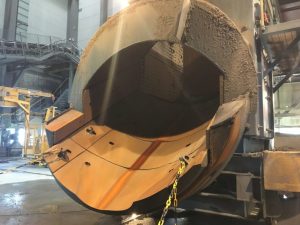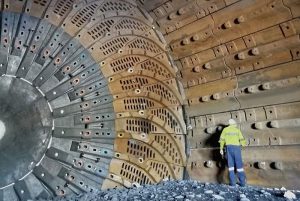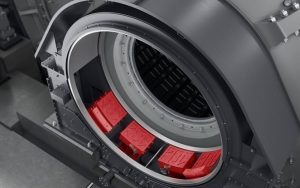Rubber Tires
The major share of the world’s rubber production is about 75% of the production of rubber is used up for rubber tire manufacturing in tire factories. Tire or tyre refers to a device that is used to covering the wheels.
These tires, which are manufactured to cover the wheel, are reinforced rubbers special to the cords of the nylon, fiberglass or other materials.
The tire produced with this material is filled in to make it easier and smoother with compressed air. Rubber tires are a very important part of the vehicle because these tires are very important for reducing the bumps and road level irregularities, as well as protecting the wheels against tearing and tearing.
In addition, rubber tires can well friction bond between road or road surfaces and vehicle so that the vehicle moves more smoothly, acceleration and handling. Today, a wide range of rubber tires are manufactured using different types of tires, each of which is suitable for different vehicles, with the maximum inflation pressure maintain for trucks, agricultural interiors, industrial vehicles, specialized tires, as well as various types of tires For bicycles, casters and so on.
Main Properties of rubber tires
- Rubber tires are a continuous and durable pneumatic rubber that has integrated texture and fabric cushion encircled that is well positioned on the rim of the car’s wheel or any other vehicles.
- Adding some chemicals to rubber used to produce rubber tires and making changes in the rubber characteristics will help the tire to withstand more wear, heat and cold, and burnout.
- Tires make the tire of the vehicle more powerful and more flexible and resilience.
- In the belted tires, adding treads of casting material like rayon, finely drawn steel, fiber glass etc. under the rubber layer or the rim of the wheel make the tire much easier to travel longer and handling.
- In order to place the tire to the rim of the wheel, the steel wire is added to the bead or rim of the wheel.
- Rubber tires have a high resistance to wear, corrosion and abrasion due to their flexibility and due to the added materials.
Different parts of rubber tires
Rubber tires consist of two main parts::
- The tread or road-contacting part: This part of the tire which provides traction is made in such a way that it is very resistant to wear and abrasion.
- The body or carcass part: This part of the tire, which provides high flexibility and strength to the tires, is used of rubberized fabric.
Types of rubber tires
Generally, rubber tires are produced in three basic types:
- Bias Tires
In this type of tire, Cords throughout the tire are rigidly and diagonally drawn from the bead to the bead, and are oblique shape in rubber bias tire Cords are drawn in opposite directions to form an intersection pattern.
- Belted Bias Tires
In belted Bias Tires, plies are stretched diagonally and in the opposite direction, like Bias tires. But there is a major difference between these types of tires with Bias tires, and that the belt is wrapped in circles around the tire and placed between plies and tread rubber.
- Radial Tyres
In this model, rubber tires, unlike Bias rubber tires, cords move from bead to bead and in and are placed in a perpendicular path.
Classification of rubber tires
Tire is one of the most basic equipment needed in a variety of vehicles, including automobiles or vehicles used in the industry or other types of applications.For light cars or small segment vehicle tires are used that have a high performance, with more safety, higher driving stability and more driving distance.
But tires used for medium-duty and trucks and other heavy vehicles, such as buses and tractors, are constructed with special strength and structure, using more sophisticated technologies, so that more distances can be made with more reliable power transmission and consumes less fuel.
Other types of rubber tires are used for all types of motorcycles or bikes, which are also designed and manufactured in different shapes depending on their application. Other than this, rubber tires for all types of any small movable objects that need wheels are also used with rubber tires, such as carts, wheel chairs, carriages, trolley and more.
With the above described tires, the tires can be categorized as follows:
- Industrial and agricultural tires
- Tires used in Casters/Wheels
- Types of tires used for vehicles such as any kinds of cars
Tips for choosing and buying rubber tires
Rubber tire dealers should be well positioned to know the location of metal cables or fibers used in the walls of tires of light truck tires, trucks and other types of road tires, so that they can well guide their customers to buy better quality tires.
This is especially important for large and heavy tires used for trucks and buses and other types of heavy vehicles, because they are much more expensive and more construction equipment is used to produce them.
Failure to properly identify these tires to the consumer will cause them to deteriorate sooner and more expensive. It is sometimes seen that buyers are planning to even measure the overall wall thickness.
Given that the internal structure of most tires has eco-complex patterns, and considering that these types of tires against sound waves High frequency is very weak. These measurements should be done with special care and attention.
Industrial and agricultural tires
Industrial and agricultural tires are a special type of tire that is produced in a very tight form and used in various industrial and agricultural fields. These tires all feature shock absorption and ensure smooth and soft movement. Agricultural tire is usually used for various agricultural vehicles, including:
- Farm tractor
- Farm wagon
- Forklift
- Backhoe
- Loader
- Combines
- Grain carts
- Pivots
- Implements
- Antique tractors
So, with the use of agricultural tires for agricultural machinery, it is very easy to find a variety of services with these agricultural machinery such as gardening, moving in different area like agricultural land, moving on urban roads, working in wet areas Caused by rain and snow, and so on. In addition, industrial tires can easily be used in various industrial place, factories and manufacturing areas. For this reason, you can use industrial tires for the following:
- lift trucks or Fork lifts
- large cranes
- large Compactors
- Trailers
- Tow tractors
- Electric vehicles
Different types of industrial and agricultural tires
- Solid rubber tires
These types of tires were used for road vehicles and then replaced with tires filled with pneumatic air. Still, these tires are used by some factories, such as aging trucks, industrial trucks and have other applications.
- Radial tire
A pneumatic tire made with radial cover.
- Skid Steer Tires
This type of tire is extremely robust and solid that create only by creating a diaphragm hole. This hole cause flexibly and easy moves the tire like pneumatic tires.
- Industrial pneumatic tires:
This type of tire is made to reduce vibration and improve traction from enclosed air and pneumatically.
Any types of code in agricultural tires
Agricultural tires are classified in a variety of ways because they are used in soil and deal with soil types and moisture. Different types of rubber patterns are produced due to the fact that they are suitable for different types of soil.
For proper drying of the ground by drying machines, shallow tread tires and angled edges need to bite well in the soil. Mark this type of tires with the R-1 label.
For wet soil, it is better to consider tread dentin more deeply and more spacious between lug. This type of wet soil rubber is labeled with R-1W( w is the first letter of wet). Use F category for front farm solids and use Group I tires for executive agricultural implements. Also, HF group tires typically use wet and flotation grounds.
Types of application of agricultural and industrial tires
- Transportation
Industrial tires are typically used for vehicles that carry heavy goods and equipment for long distances and above normal and at moderate speeds.
- Stack/Lift
Industrial and agricultural tires are commonly used for vehicles that work by lifting goods vertically or threshing the products in low spaces, and are constantly in need of moving, braking, accelerating and shifting directions.
- Multipurpose
Some industrial and agricultural rubber tires are also used for universal transport. Typically, these tires are used in these vehicles that works as road maintenance, towing, or snow removal. This type of industrial rubber is very good with the surface of asphalt roads, non-residential and earthy.
- (Earth mover) Tires suitable for moving on the ground
Some industrial tires are used for a variety of construction vehicles, such as a loader, a grader, a damper, and more. These vehicles typically carry out freight transportation, construction materials, moving on construction waste and emptying the load.
Rubber Casters
casters or rubber wheels use a lot of equipment and applications from the smallest appliances to the largest equipment, including heavy vehicles and airplanes.
casters or in other words castor are some kind of rubber wheels that, with the presence of external steering pivot, automatically start to swivel or move in order to control this pressure with align itself to the direction.
Usually inside these wheels or caster are filled with metal or plastic, and the outer layer is made using rubber. Wheels or rubber caster are made of a very special and resilient soft rubber compound that is highly resistant to bending and are wrapped around an aluminum, steel or plastic wheel centers.
The rubber used in the production of these caster is very resistant to chemicals, and is made in a way that is excellent for all floor surfaces.
Small caster or Small sized wheels are generally resistant to rust-proof, rotate easily, and absorb very well shocks.
Different types of rubber used in the manufacture of wheels or castors
- Soft rubber wheel: These types of wheels are usually used for light loads with a capacity range of 80 to 350 lbs. These types of rubbers have a soft rubber tread on a hard core to provide a soft, quiet motion, and provide quiet, smooth riding and floor protection.
- Hard rubber wheels: Unlike soft rubber wheels, this kind of wheel is suitable for loads of more weight in the range of 150 to 275 lbs. Using these Wheels, mobility is easier and more suitable for floor protection. In addition, this type of rubber is also resistant to mild acids, grease and oils.
- Moldon Rubber Wheels: If you want to use these wheels for heavy loads, you should use a moldon rubber wheel that can handle loads between 280 and 2000 lbs.
Properties of rubber casters or wheels
- Economically worth
- It works well in a variety of applications
- rolling calm, soft and silent
- Well absorbs the vibration and shock of the road
- Usable in wet and moist environments
- Easily Rejects floor debris
- Protects the floor well.
Which Applications are used of casters or wheels?
Rubber castors are used to make various types of equipment. Some of the tools used by casters are often:
- Wheels of wheel chairs
- As Trolleys
- Buy tire carts
- For truck platforms
- As the equipment used in food services
- Applied Hotel Equipment
- As the trash bucket wheel
- To produce textile carts
- For Rolling Chairs
- Dolly
- Used as tire heavy carts and duty swivel used in various industries
- As a pallet truck and all types of forklift trucks and … in industrial environments
Important tips for buying casters or rubber wheels
When buying rubber wheels or castors, you should note the important points that will be mentioned below:
- Load weight: The weight of the load on the rubber wheels has a direct impact. The higher the weight of the load, the greater the width of the rubber wheels you buy. So remember that the wheel diameter should be considered as the wheel load
- Floor conditions: The ground floor conditions used in your choice are also important. It’s best to have more rubber wheels in place to easily cover cracks, tracks and c moldings, and do not get spoiled. This way you can protect the wheels
- Abnormal conditions: Abnormal conditions usually return to the environmental conditions in which the rubber wheels or castors are to be placed. Check out items such as the amount of humidity in the environment, severe heat, extreme cold, chemicals, blood, fats, oils, salt, acidic substances, etc. before buying a caster.
- Rollability: Whether the wheel you are buying is going to spin around
- Swivel radius: Swivel radius is defined by the horizontal distance measured from the vertical line to the outer edge of the wheel rotation. It’s better to have a larger neck radius to make the castor or rubber wheel more comfortable to spin
- Extreme temperature: Severe heat and cold have direct impact on the performance of castors. Keep this in mind
Automobile Tyres
In order to provide a simple definition of a car’s tires, we should define it as a rubber ring around the rim of the car’s wheel. The tire is made of special rubber and compressed air is used to fill it.
But the luggage of a variety of vehicles has led to a variety of tire variants with different ratings. These tires are classified according to their tensile strength, resistance to humidity and temperature, and so on. They know this ranking as UTQG rankings.
In this ranking, the tire’s speed is also considered. Because some of the tires have been unearthed in one direction, which gives rise to rubber-tire designs, and is usually used to move them in the form of flash on one side. With this in mind, when installing tires, we must keep in mind that the arrows should be mounted to the vehicle.
For this reason, you can not install on the left side of the car the tire in the clockwise direction, and the tire on the right side of the vehicle that is tied in the direction of counter-clockwise, and both tires must be on both sides. Be one direction.
The tire’s rotation moves tires between the various front and back axles wheels removes loads of rubber, which makes tire wear different.
Types of automotive tyres
- Racing and performance tires
Tires designed for high speeds, due to the more sophisticated structure of the rubber, provide better traction, especially at high speeds.
This These types of tires is suitable for both wet and dry climates, although this depends entirely on the manufacturer and even the tire model produced by the manufacturer. Such tires require active marketing and research and development. High-performance tires used on the streets are usually called summer tires or three-seasons tiers.
The reason is that these types of tires are optimized for use both in hot and cold weather and dry performance. However, winter driving with these tires is not recommended, especially if cold winters are dominant in the region and vehicle is driven in the winter should be changed the tiers.
- Winter tires
These types of tires are designed and constructed to meet the performance requirements of winter driving and in cold and humid weather. Typically, the structure and composition of rubber used in this type of tire is waster than rubber used in summer tires.
The structure of these tires is such that it simplifies the rotation and movement of snow and ice, but wears at higher temperatures.
Special winter tires have special grooves and sipping patterns that are very useful for moisture and are usually removed in the spring. The reason is that the rubber compound are softened in hot weather and reduce the useful life of these belts.
- All Season Tires
This type of tire is designed and developed to be suitable for both damp and wet summer air and for the cold, dry and humid weather of the winter.
Types of rubber and tire pattern design used in hot seasons are not suitable for technical reasons for winter use. In fact, all year-round tires are something between the two types of summer and winter tires, so the whole season tires are not a great summer tire, not a great winter tire and something in between.
- All-terrain tires
These tires are special for SUVs and trucks or small trucks. all-terrains tires have tighter rims than all other tires, with more resistance to perforation or truck deviations out of the road.
The design pattern of these tire brakes has exceeded the distances for the whole season tires, so that they can be removed. Among the various types of all-terrain tiers, many of them are designed for use on the outskirts of the city.
- Mud tires
You can see large, chunky and deep patterns in the Mud tires, the structure of these tires designed for easy movement in muddy surfaces.
Open patterns of these tire designs help to remove mud and sediments from its lugs quickly. This type of rubber is wider than other types of tires, which allows the car to fall into the mud. And it’s easier to move at the mud levels without sinking in the mud.
Though this type of tire design and tire construction doesnot allow for good and comfortable driving on the road from the driver.
چقدر این پست مفید بود؟
روی یک ستاره کلیک کنید تا به آن امتیاز دهید!
میانگین امتیاز 0 / 5. شمارش آرا: 0
No votes so far! Be the first to rate this post.





